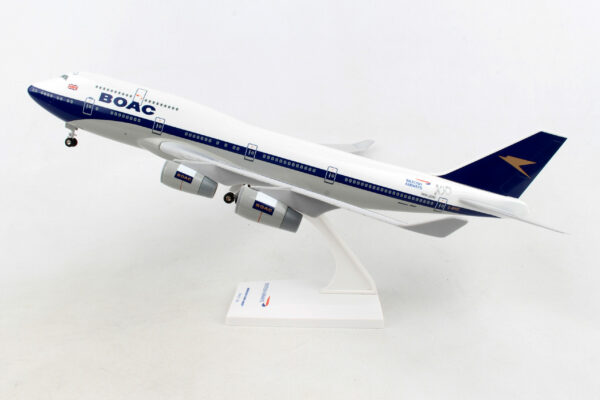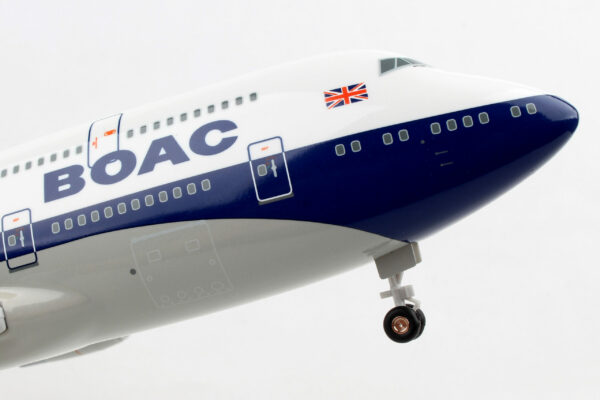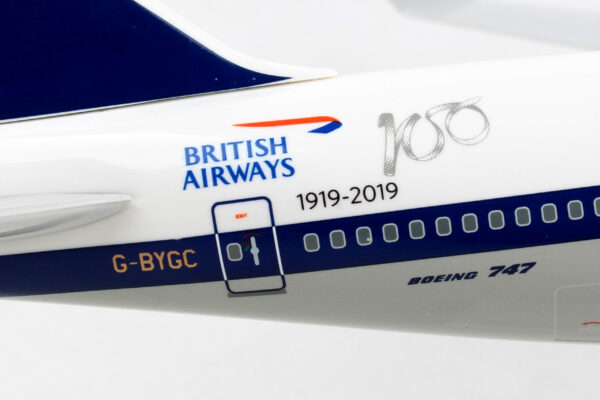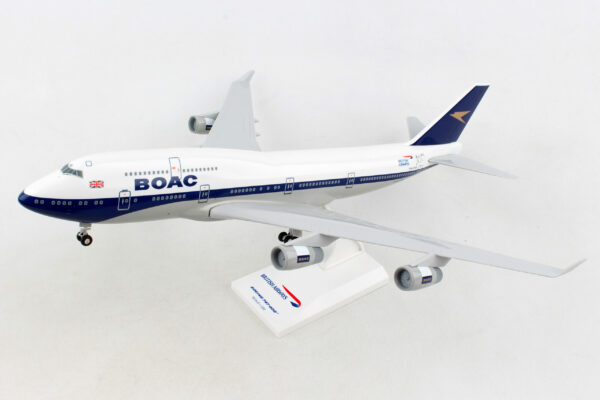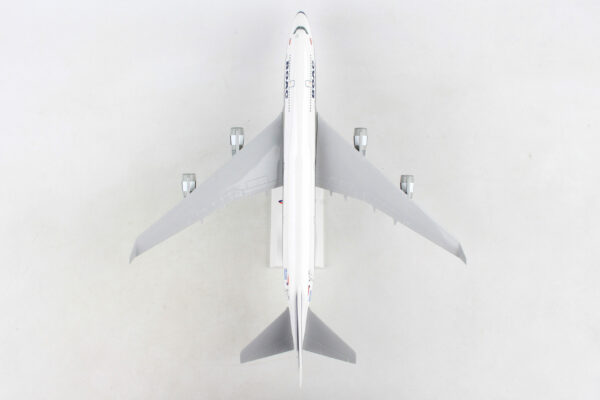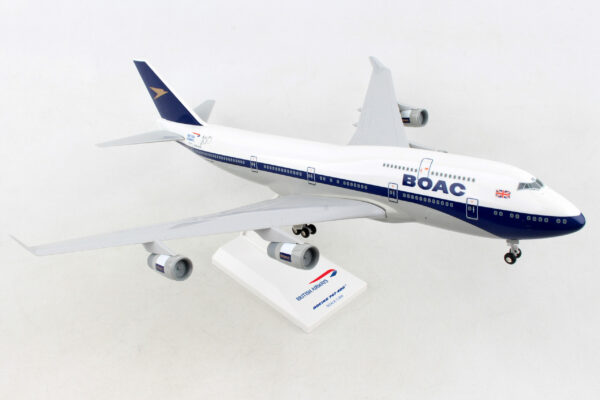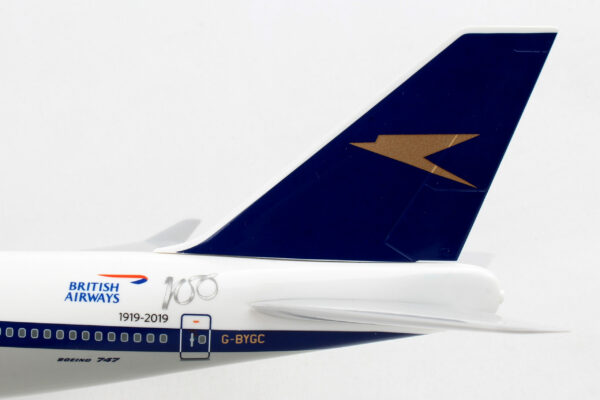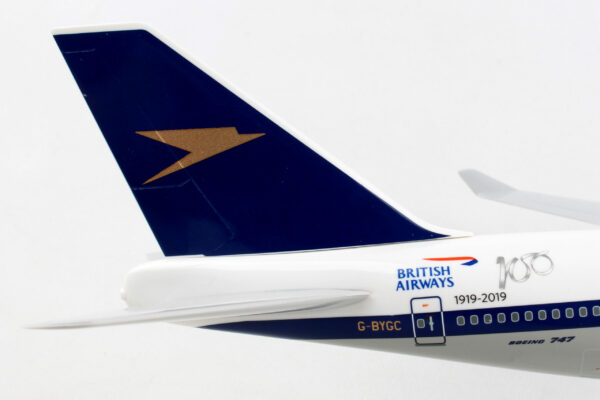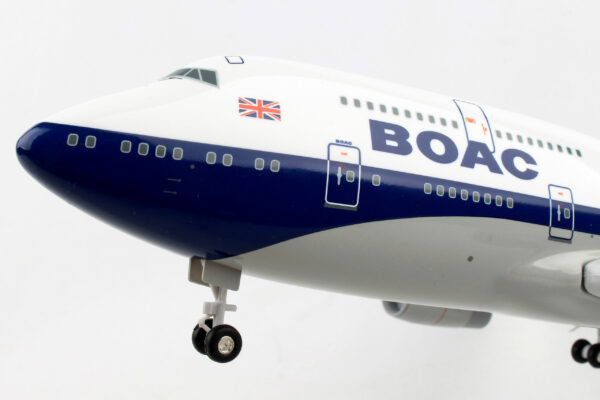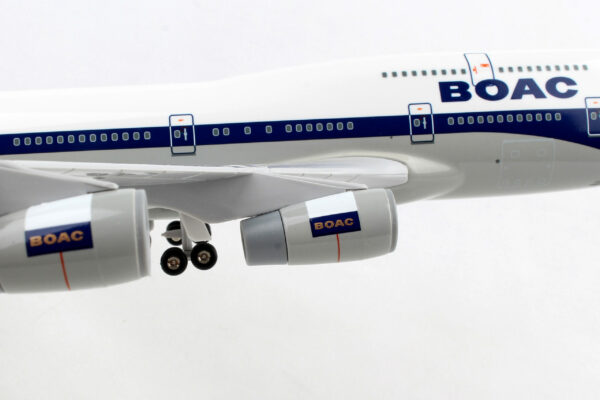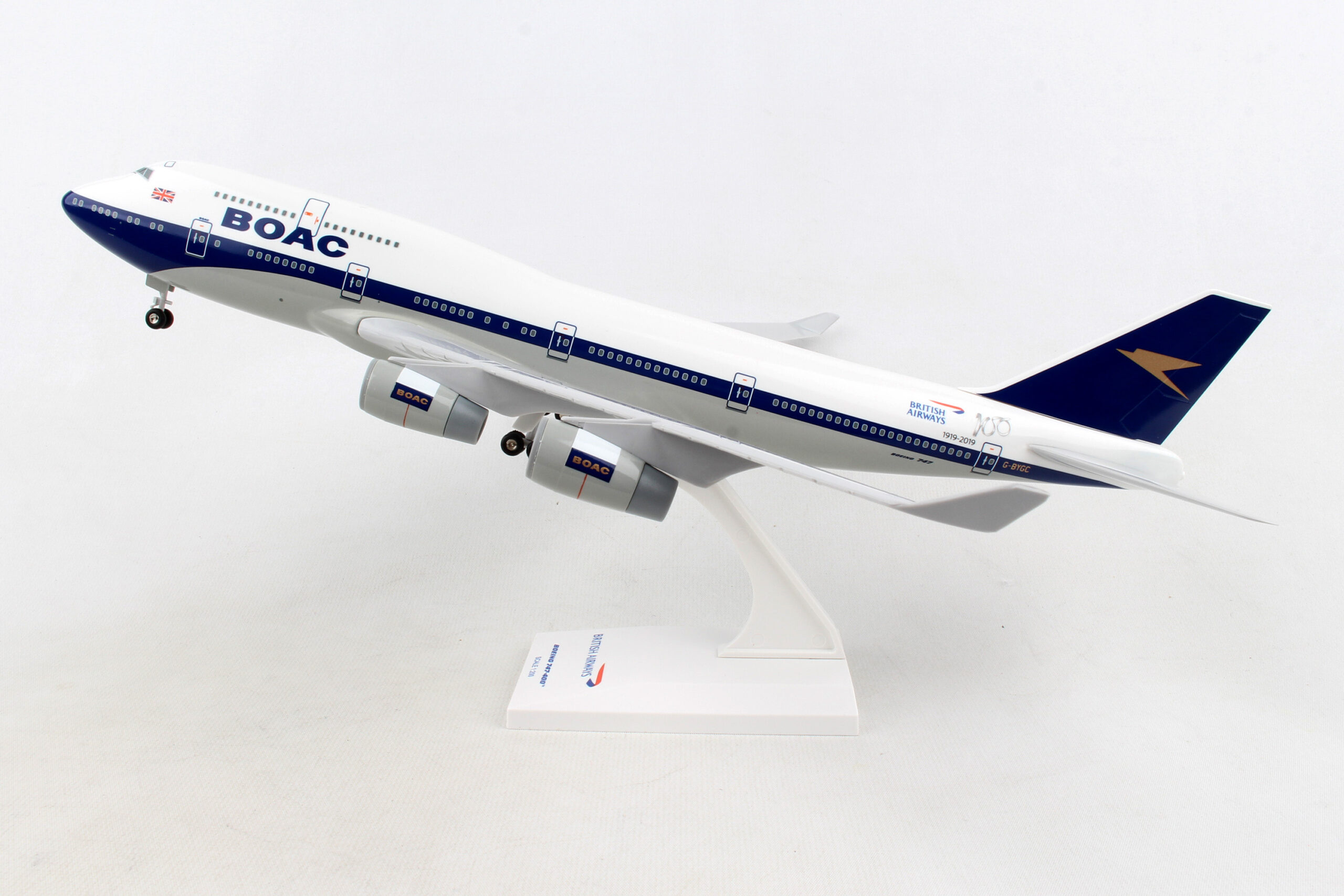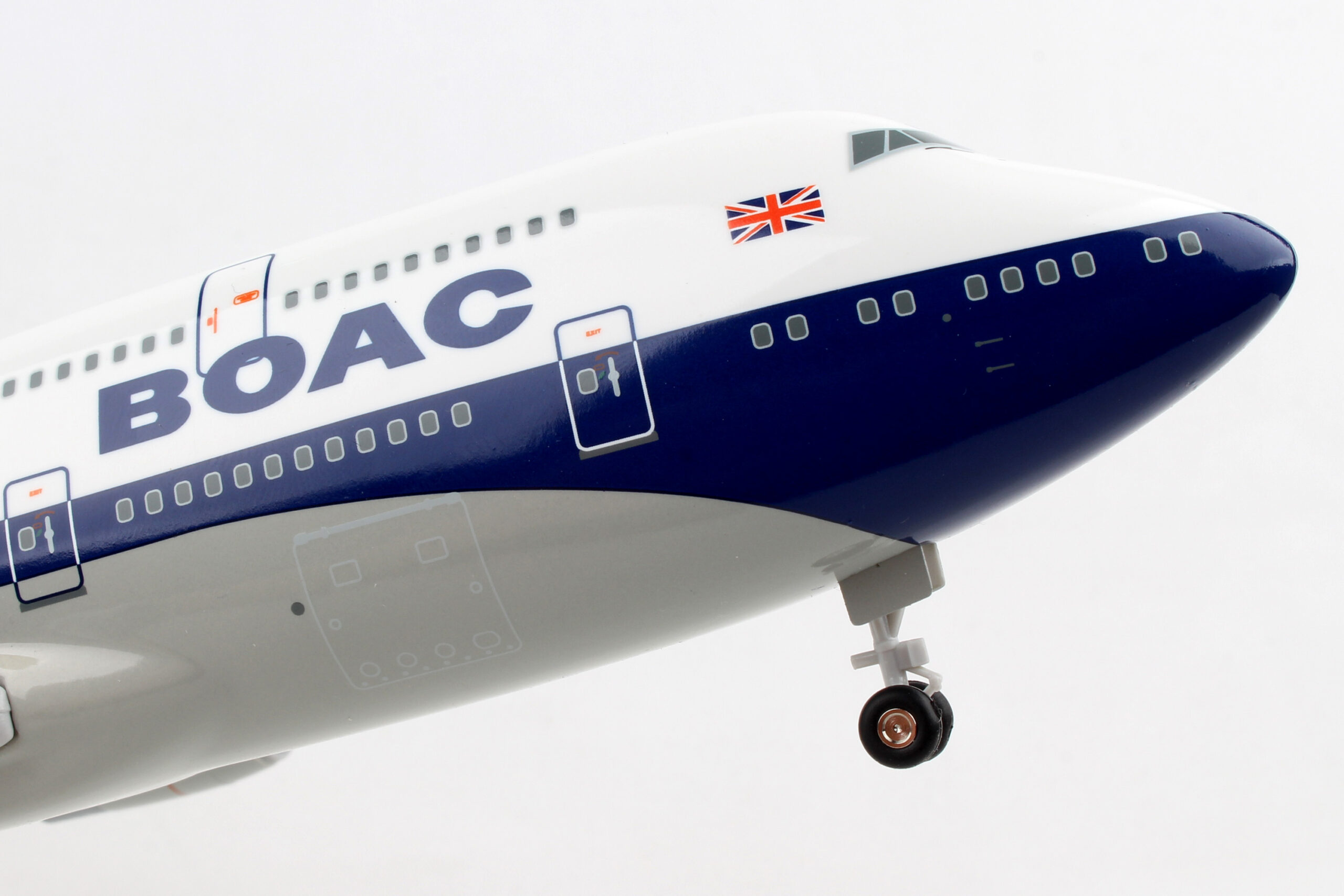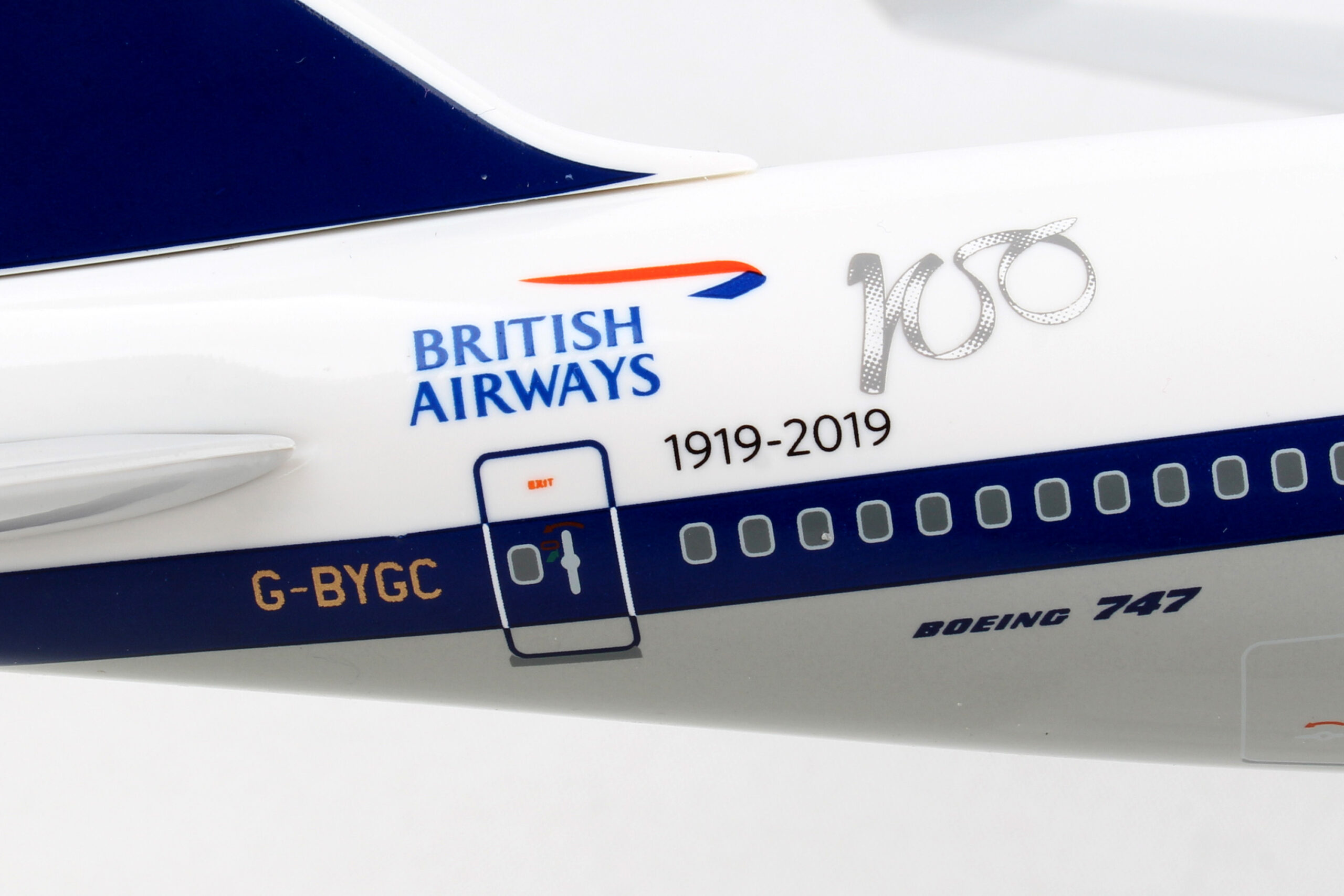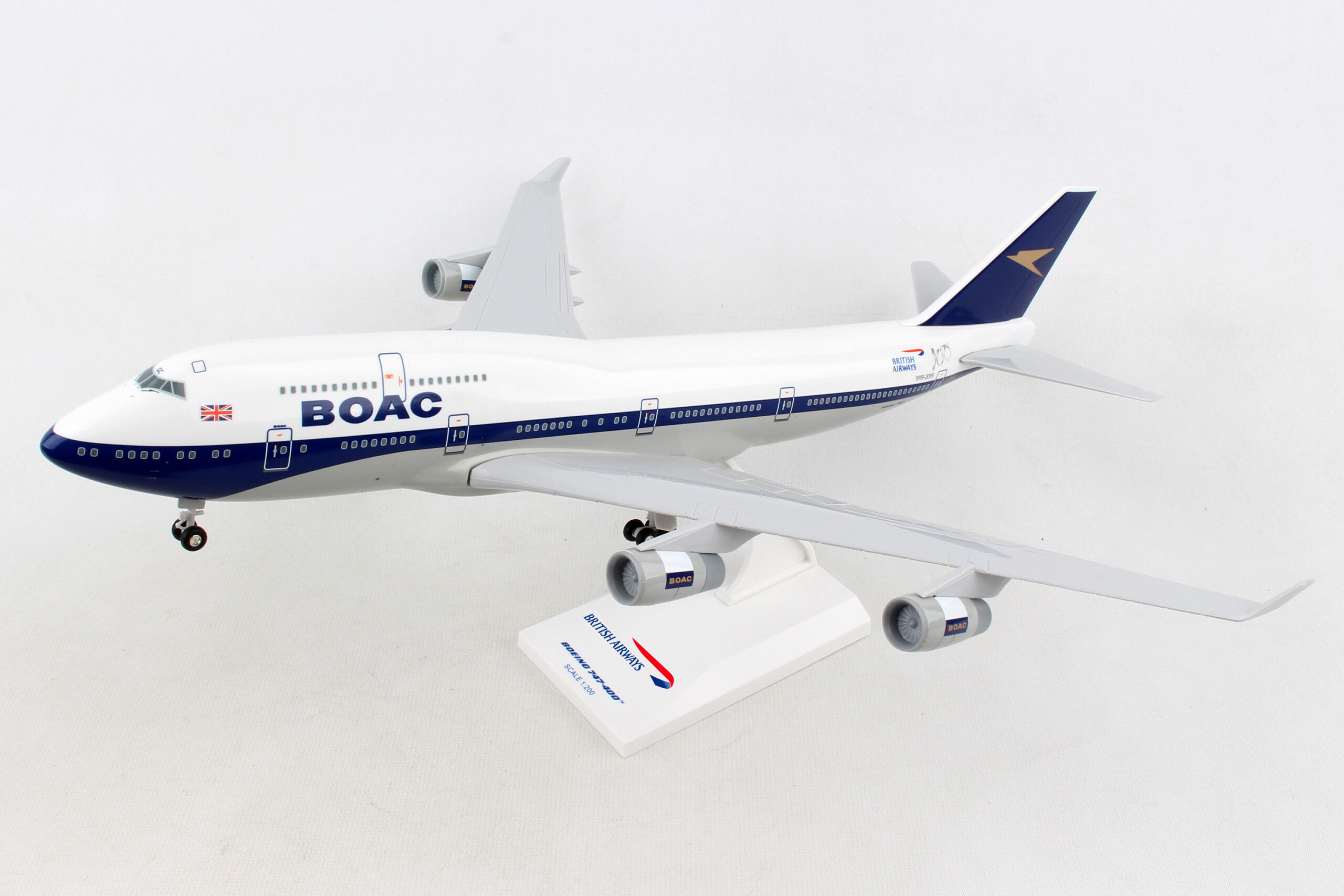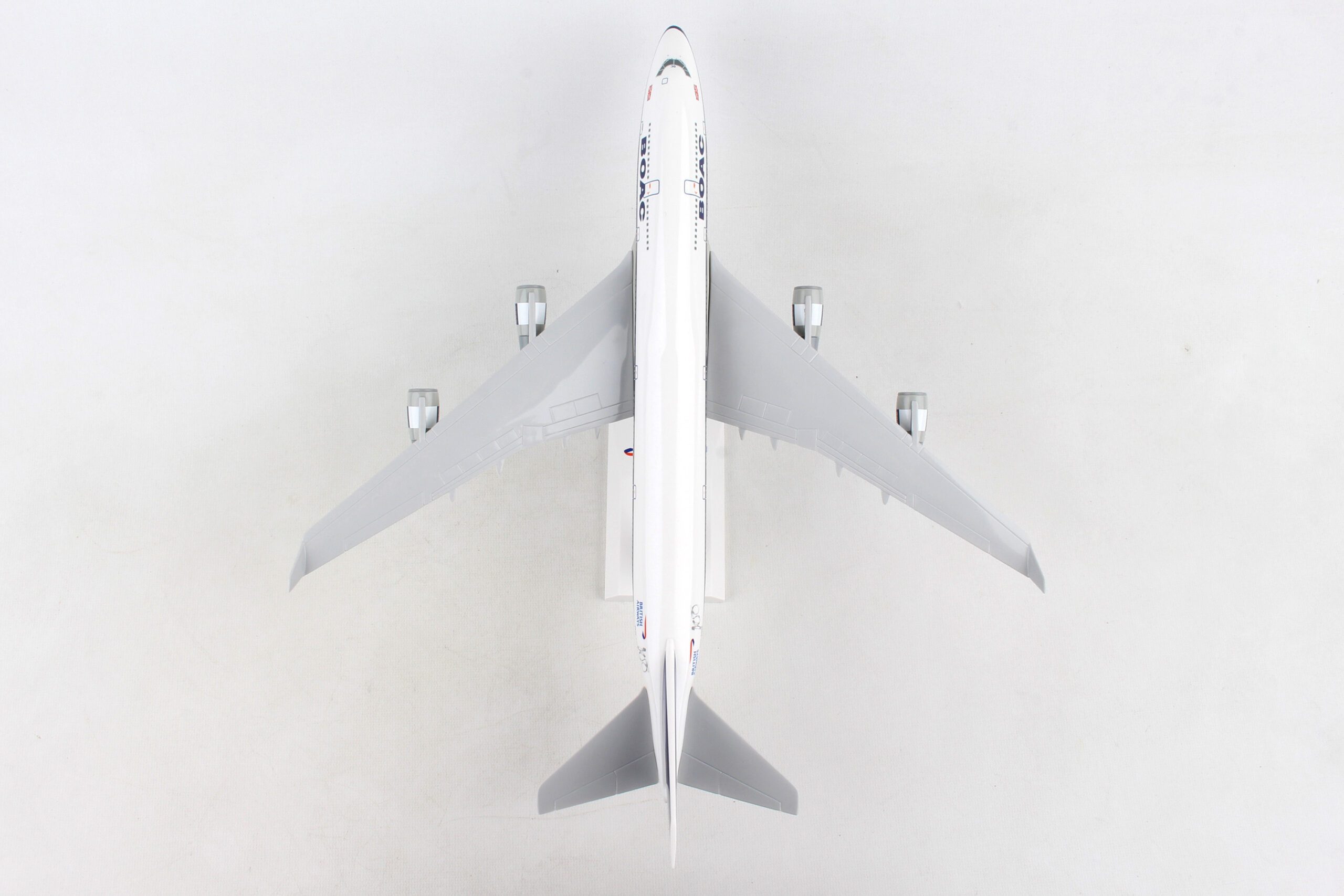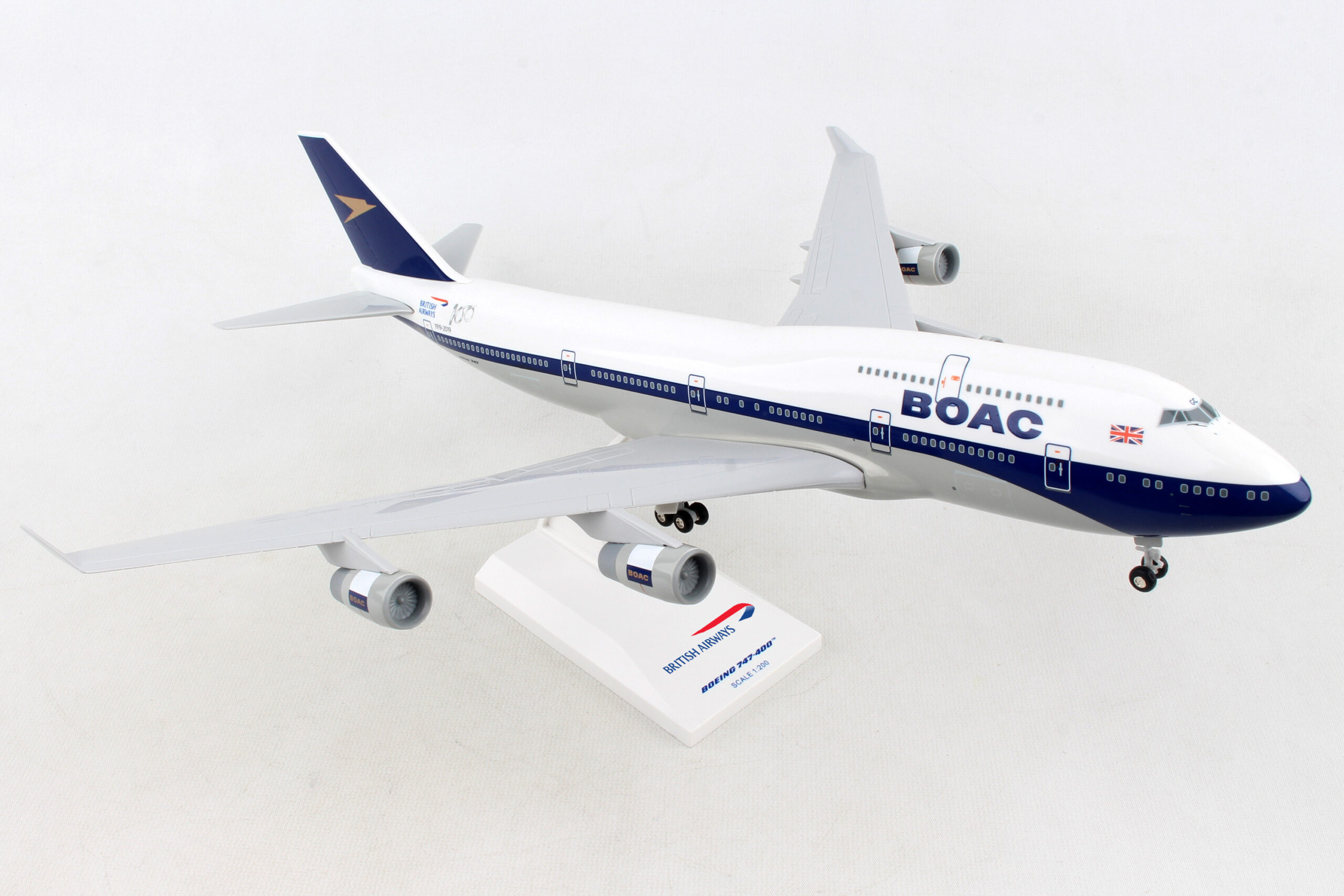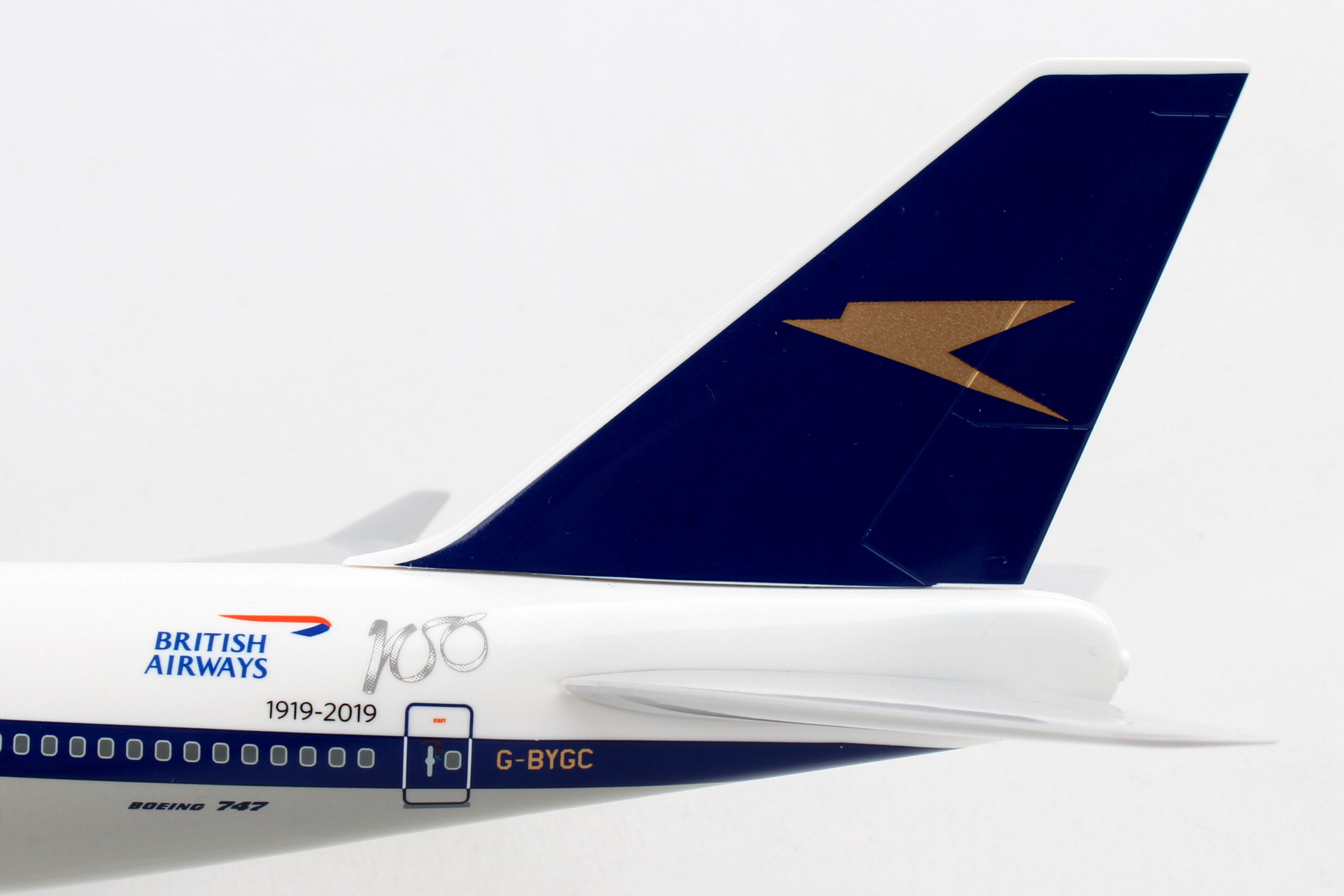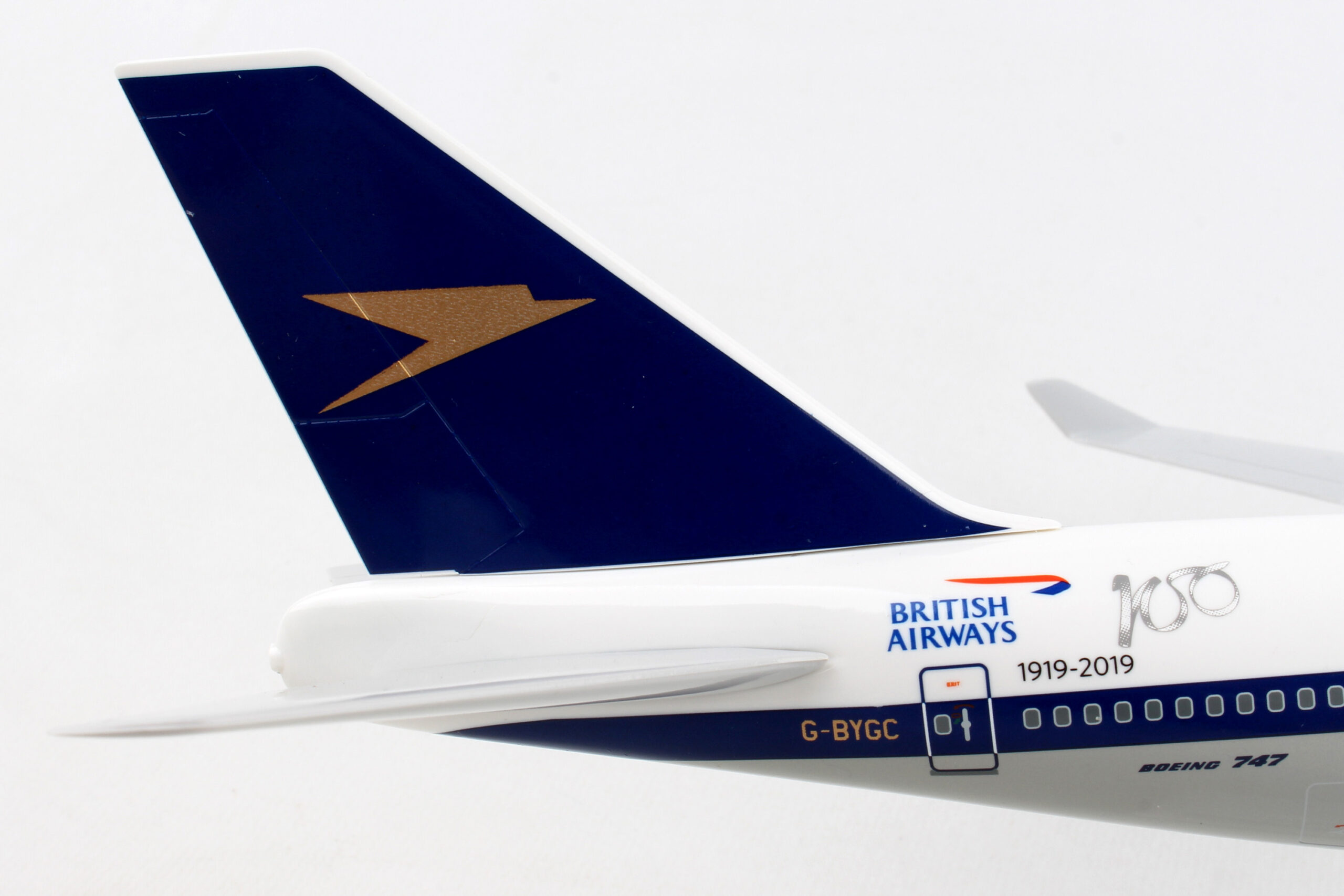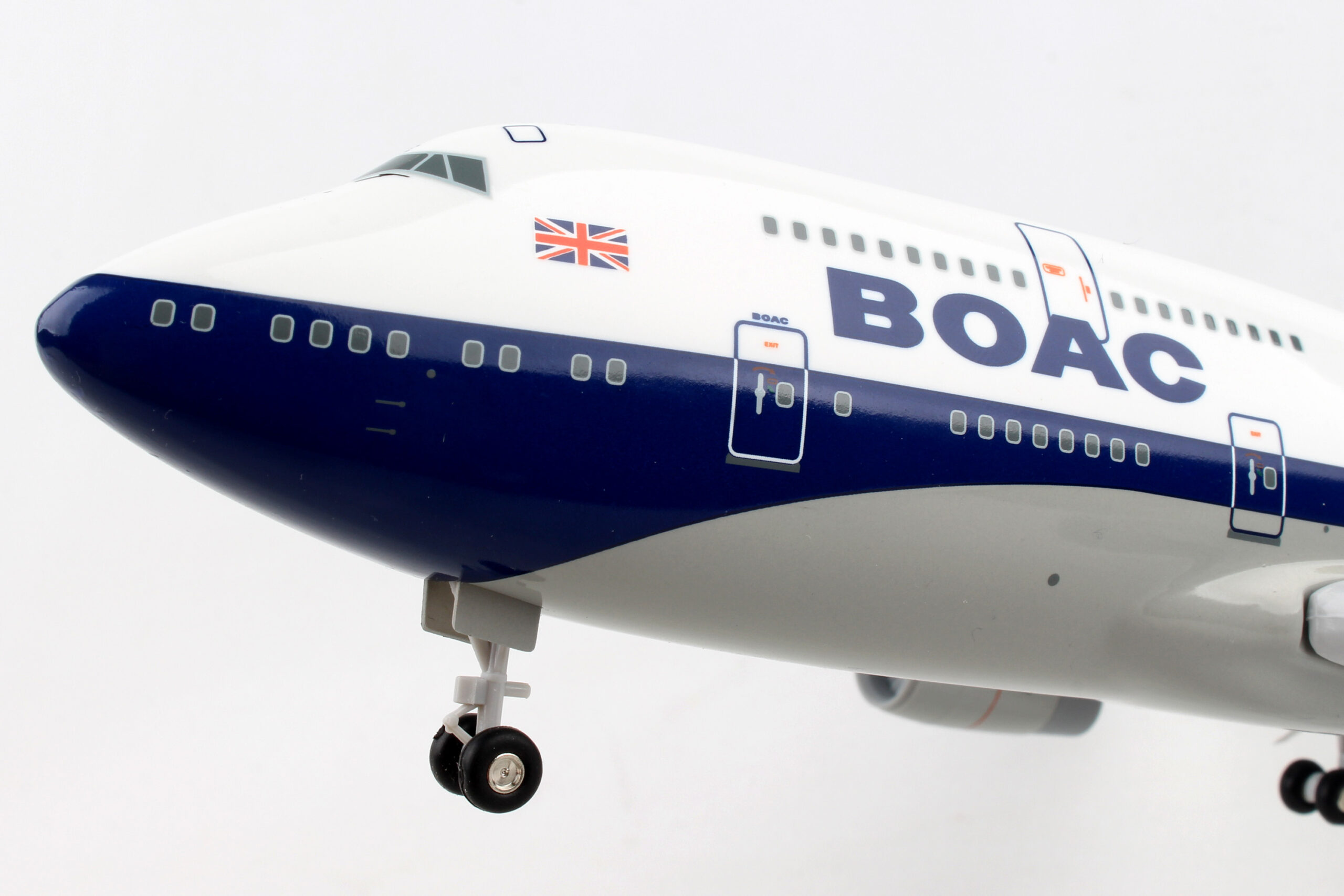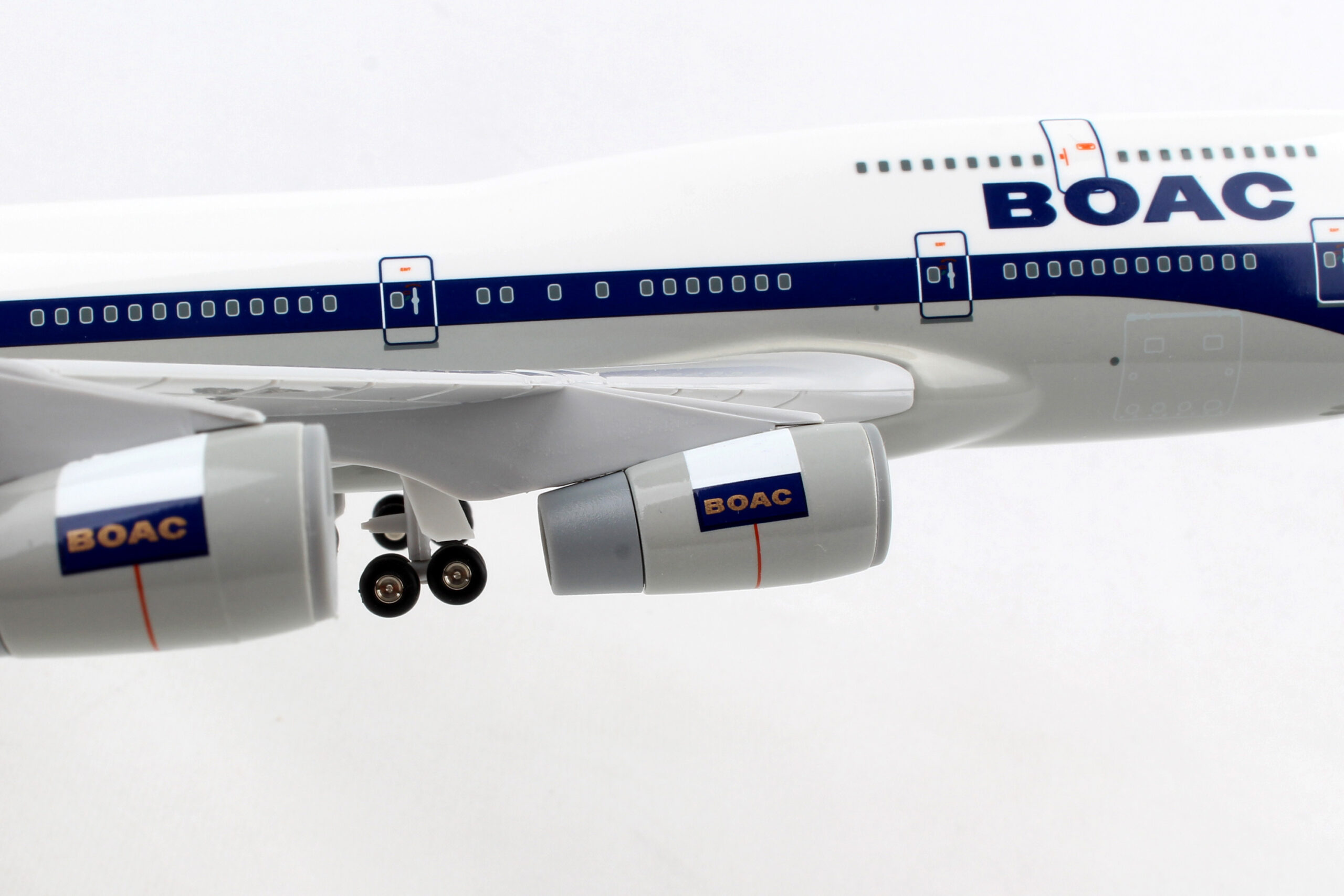SKYMARKS BRITISH 747-400 1/200 W/GEAR BOAC 100 YEAR LIVERY
SKYMARKS BRITISH 747-400 1/200 W/GEAR BOAC 100 YEAR LIVERY
Comprising superior quality, solid, substantial injection molded plastic components with a simple snap-fit design that allows for easy assembly without the need for glue, this SkyMarks 1/200 scale British Airways Boeing 747-400 - Registration G-BYGC - adorned in its commemorative 100th anniversary BOAC "Gold Speedbird" livery that the airline used between 1963 and 1974, was the last remaining Boeing 747-400 in British Airway's fleet, having made its final flight on December 11, 2020. The model measures approximately 13-7/8-inches long with a 12-7/8-inch wingspan and comes complete with Landing Gear and a Display Stand. An accurate, true-to-scale reproduction of the actual aircraft, the model is great for collectors and features authentic, highly detailed graphics and markings. Easily discernible from earlier 747 models by its prominent wingtip extensions and winglets, the Boeing 747-400 was initially introduced in 1984 as an advanced variant of its predecessor, the Boeing 747-300 - known as the Advanced 300 Series - as it was intended to be more cost-effective than the -300, with more efficient engines, a greater range, at nearly 7,300 nautical miles, and due to the development and implementation of a "glass cockpit," it did away with the need for a flight engineer, consequently enabling the aircraft to be flown by a two person crew. Northwest Airlines was the launch customer for the Boeing 747-400, which entered service in February 1989. With 694 Boeing 747-400 aircraft having been produced over the course of its 20-year run from 1989 until 2009, replaced by newer, more efficient twin-engine aircraft - the Boeing 777, Boeing 787 and the Airbus A350 - the Boeing 747-400, which was offered in passenger, freighter, combi, domestic, extended range passenger and extended range freighter versions, was the bestselling version of the Boeing 747. Readily recognized around the world by its iconic large hump atop the front of its fuselage, the Boeing 747, nicknamed - Jumbo Jet - entered service in 1970 with Pan Am as the first wide-body airliner, and has primarily been used for long range passenger travel. Although capable of accommodating from 416 passengers up to 624 passengers, depending on its seating configuration, because this large, quad-engine jet was conceived in the mid-1960s, when supersonic transports were also concurrently on the drawing board, and viewed more favorably at the time as the likely successor for the future travel, Boeing engineers and Pan Am CEO, Juan Trippe opted for the Boeing 747 to be designed so that it could be readily converted into a freighter if required by merely retrofitting the fixed nose of the existing passenger aircraft with a large hinged cargo door. Consequently, if a passenger 747 aircraft were ever to be adapted as a cargo plane with a hinged cargo door, it would be much more cost effective and considerably easier to convert existing passenger aircraft into cargo aircraft if the cockpit were located above the nose, thus enabling the existing passenger 747s to continue flying as transformed cargo planes. Even though supersonic transports did not readily materialize for the most part, and did not supersede the Boeing 747 as initially envisioned, over the course of time, the Boeing 747 was not only embraced as a successful passenger and cargo aircraft, many passenger Boeing 747 aircraft were ultimately converted into cargo 747 aircraft, known as BCF - Boeing Converted Freighter(s) when it was no longer viable that they continue to be used as passenger aircraft.
